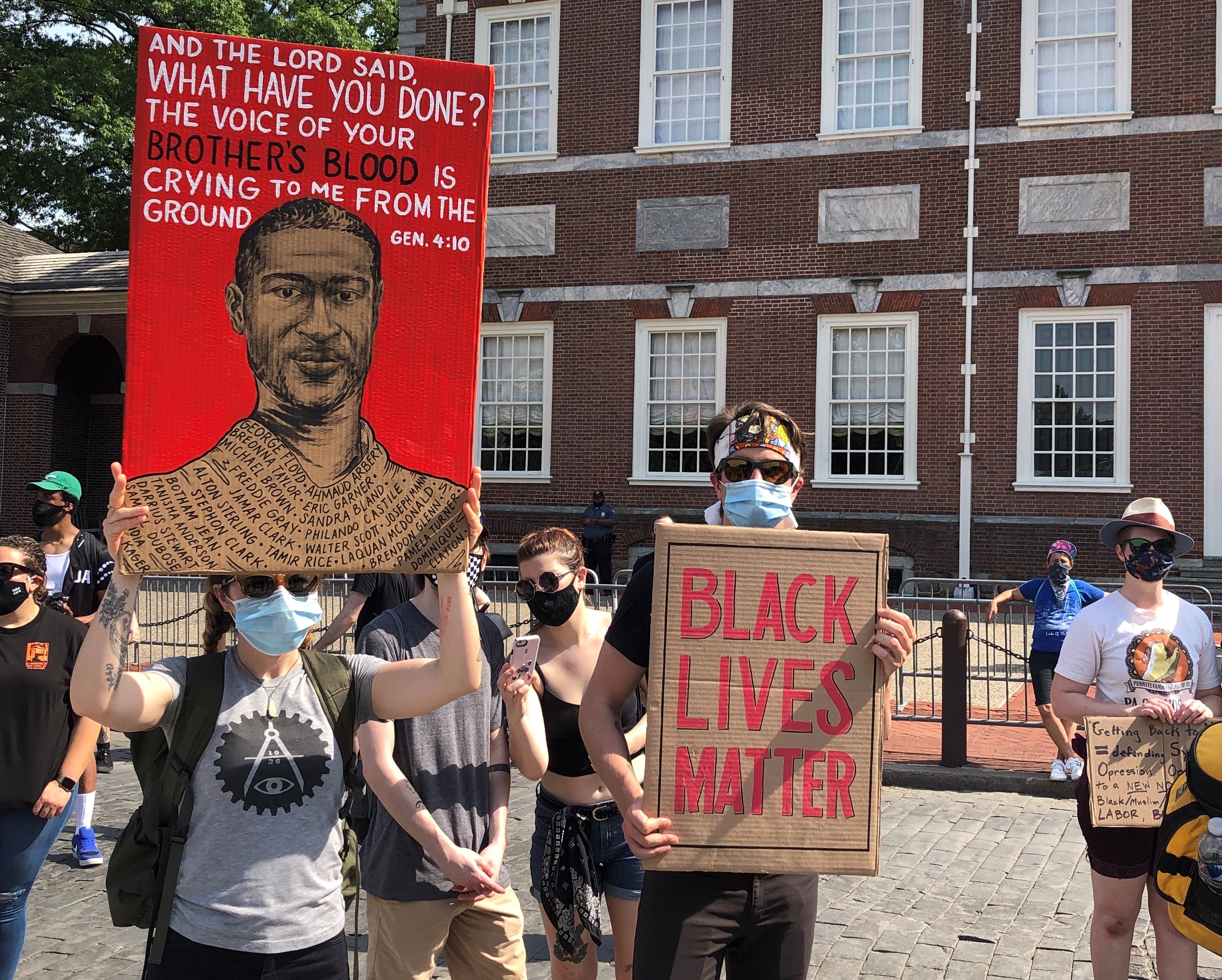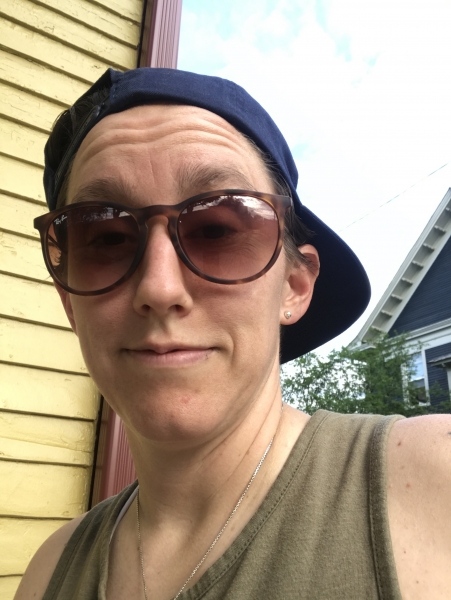
Black Lives Matter protest in Philadelphia, June 2020 Lucy Duncan / AFSC
Following the police lynching/murder of George Floyd, Minneapolis has become the epicenter of a global uprising that is demanding the long overdue justice and liberation for Black people and eradication of white supremacy.
It has been a surreal two weeks in Minneapolis—and specifically in the part of Minneapolis where George Floyd was murdered, South Side (where I live). For me it is important to acknowledge the communities here, and what I have learned and continue to learn about the space where George Floyd was murdered.
I moved here in December of 2008. I moved into this Black neighborhood, which has been shaped over decades by redlining and concentrating resources in white neighborhoods. Just north of South Side is the neighborhood with the third largest Native American urban population in the country. It was the birthplace of the American Indian Movement.
While I may have had what was an evolving anti-racist awareness and “good intentions,” my moving here assisted in the further recolonizing and uprooting of Black Indigenous and People of Color (BIPOC) communities here. Over the past 12 years in South Minneapolis, I have witnessed a strong majority Black voter block intentionally fractured to center white development interests. Shortly thereafter, a community church for both the Black and LatinX communities as well as a Black-led after-school program for community youth was bulldozed to make space for a food co-op. More white-centric businesses followed. As the number of white occupants increased, so did the presence of police.
The corner where George Floyd was murdered—38th and Chicago—as Black elders have shared with me, holds deep historical significance for the community. For decades it has been a location with a majority of Black-owned businesses and places of worship. It is a known gathering point. And in the face of the violence that our gentrification has brought, this space feels sacred for the Black community and I have learned to regard it as such. To me, the fact that George Floyd was publicly lynched here embodies the last 500 years of our relentless attempts to destroy every aspect of Black life on this soil. As someone who identifies as white, I won’t ever know the spiritual, emotional, and physical havoc this wreaks on Black people. But what I do know in my body and my spirit is that whatever the response has been: protests, property destruction, and even looting, it is beyond justified. Period.
The Minneapolis police and the surrounding suburban forces that have supported them, as well as the state police, have deployed teargas, rubber bullets, and flashbangs on protesters without warning—not unlike the brutality inflicted on protesters across the country. Police also pepper sprayed medics trying to treat downed protesters and prevented them from removing people critically injured by police. Even after arrangements were made for 38th and Chicago to be a sanctuary space, police have shown force there. In the first week and a half after George Floyd’s murder, I witnessed the police either instigate or escalate violence at every protest I joined.
In spite of these attempts by white individuals, groups, police, and the corporate mainstream media—BIPOC communities have successfully organized and led what has now become a multiracial, global movement for justice for their communities and an end to systemic and institutionalized white supremacy. Through their leadership, which has largely been that of Black and Indigenous women, and the activation of thousands of young people across the Metro, the situation here is shifting.
Over the past two weeks, all of the officers involved in George Floyd’s murder were charged. Major institutions including the University of Minnesota, Minneapolis Public Schools, and the Minneapolis Park Board have all ended their contracts with the Minneapolis Police Department (MPD). Last weekend, our city council announced its committed to defunding MPD. The response to these sustained protests is incredible.
People have responded to the need for support in the wake of the property destruction and service disruption that happened in the first week of the uprising. This has included mass organization of food and supplies for impacted communities as well as neighborhoods creating safety patrols to protect each other from the continuance of white supremacist violence.
As the attention begins to shift from the immediate to the long-term, I believe those of us who identify as white are going to have to come to an understanding about a few things regarding our role with this movement.
First, in order for us to do this in a real way, we are going to have to start addressing how white supremacy shows up individually and relationally between us as white people and with BIPOC. This is critical, especially as we begin to imagine what a community that is defunding its police force will look like. If we (white people) are not intentional about noticing and addressing the ways in which white supremacy shows up for us, we will consciously or unconsciously work to subvert this movement and reproduce structures that prioritize the safety and maintenance of white bodies and our property over the humanity and lives of BIPOC.
Second, we have to actually commit to doing this work for the long-term. It has been our collective failure to do so that has allowed this to happen. There has been an emphasis placed on white people assisting in cleaning up and providing food and supplies--no doubt beautiful acts. However, if these energies are not consistent, these gestures become a way for us to assuage white guilt, shame, and grief without working to change the underlying structures of white supremacy. What is being asked of us right now is that we show up consistently and in ways that don’t bypass accountability.
Last and most importantly, we must understand our role in this movement. This is an uprising that is centering the leadership, communities, lives, and liberation of BIPOC. For white people, it is inappropriate to assume leadership for this moment. Our only place to take on leadership is in white spaces at the request of BIPOC. We are being asked to listen, talk less, support only in ways that we are directly asked to, and engage in true accompaniment. This process of stepping back is a way to bodily interrupt our socialization and learn a way to be in relationship that counters all we have breathed in about who we are and our role. We will need to lean into the discomfort of upending our place in this structure that puts its figurative and literal knee on too many necks.
If I had written these statements even a few weeks ago I honestly feel that it would not have landed for most white people. However, given what I have seen and experienced there is a momentum at present amongst white people that I have never known. There is an awakening.
Just remember we have a lot of work to do. To be worthy to stand up in a way that matters, we must understand that over 500 years of colonialism and racial caste will not change overnight. We need to show up in a way that celebrates and honors Black life and sees that understanding as an entry point to our own liberation.
